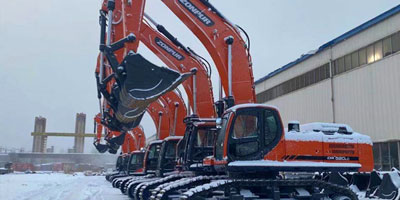Operating an excavator with a sense of fluidity and purpose is a skill that combines technical knowledge with practiced technique. Smooth operation not only leads to higher quality work but also promotes safety, reduces wear on the machine, and conserves fuel. For operators seeking to enhance their proficiency, focusing on a few fundamental principles can lead to noticeable improvements.
1. Preparation is Foundational
Efficiency begins before the engine is started. A proper setup lays the groundwork for a productive work session.
• Machine Inspection: Conduct a thorough walk-around check. Look for any visible damage, check fluid levels, and ensure tracks and linkages are in good condition. This helps prevent unexpected downtime.
• Workspace Assessment: Survey the work area. Identify the location of utilities, overhead obstacles, and stable ground conditions. Plan your excavation sequence and where spoil will be placed.
• Personal Adjustment: Once in the cab, adjust the seat and controls for a comfortable and clear view. Familiarize yourself with the control pattern (ISO or SAE) and ensure all mirrors are clean and properly positioned.
2. The Principles of Smooth Control
Jerky, abrupt movements are inefficient and stressful on the machine. The goal is to achieve a fluid motion where the boom, arm, and bucket work in harmony.
• Feather the Controls: Excavator hydraulics are responsive. Instead of pushing control levers to their full range abruptly, practice "feathering" – making gradual, incremental inputs. Imagine the levers are controlling the flow of water rather than a simple on/off switch.
• Combine Movements: A common sign of a novice operator is moving one function at a time (e.g., raising the boom fully, then extending the arm). Skilled operators combine these movements. To dig a trench, for instance, you would simultaneously curl the bucket, retract the arm, and raise the boom. This coordinated action saves time and energy.
• Utilize the Swing Function Smoothly: The swing rotation is powerful. Initiate and end swing movements gradually to avoid swinging the load violently. Come to a slow, controlled stop rather than an abrupt halt.
3. Techniques for Enhanced Efficiency
Smoothness naturally leads to efficiency, but specific techniques can further optimize performance.
• Proper Positioning: Position the excavator to minimize excessive swinging. The work area should generally be within a 30- to 60-degree arc from the center of your tracks. Repositioning the machine is often more efficient than constantly performing wide, time-consuming swings.
• Maintain a Stable Base: Always keep the excavator level and stable. Use the blade (if equipped) for additional support when lifting or digging. A stable machine provides a solid platform for precise control.
• Match the Task to the Machine's Power: Avoid "over-pushing" the machine. If the engine labors excessively, it may be more efficient to take a smaller bite of material or reposition. Operating within the machine’s optimal power range can lead to better fuel economy.
• Work with the Machine's Momentum: Allow the machine's weight and momentum to assist in tasks like dumping. A gentle, arcing motion when dumping can be smoother and faster than a simple extension and curl.
4. The Role of Awareness and Maintenance
Efficiency is not just about the immediate task at hand.
• Maintain Situational Awareness: Continuously scan your environment. Be aware of ground personnel, other equipment, and changing site conditions. A safe operator is an efficient operator, as accidents cause significant delays.
• Regular Maintenance: A well-maintained excavator responds predictably. Keep hydraulic lines tight, pins and bushings properly lubricated, and filters changed. Smooth hydraulic operation is dependent on clean fluid and well-functioning components.
Smooth and efficient excavator operation is a blend of preparation, controlled input, and strategic thinking. By focusing on gradual, coordinated movements, proper machine positioning, and maintaining a high level of situational awareness, operators can improve their productivity, extend the life of the equipment, and contribute to a safer worksite. Proficiency is developed through consistent, mindful practice of these fundamental techniques.



 +8613356922335
+8613356922335








